GENERAL DATA
Plant parts: Flowers, Leaves
Cultivation mode: Wild Collection/Cultivated
In manufacturing: Pharmaceutical, skincare, haircare, shampoo, veterinary, plant dyes production, ship ropes production, textile, paper production, extract, cosmetics, perfumery, oil.
In food: Salads, herbal tea.
🌸 Industries That Use Blue Mallow Flowers (Malva sylvestris L.)
Blue Mallow Flowers are valued for their deep violet petals, high mucilage content, and anti-inflammatory, soothing, and emollient properties. They are widely used in herbal medicine, cosmetics, wellness teas, and ethnobotanical remedies.
1. Pharmaceutical & Traditional Medicine Industry
Blue mallow is a classic soothing agent in both Western herbalism and traditional Mediterranean medicine.
Applications:
-
Used in herbal remedies for coughs, sore throats, and gastric irritation
-
Applied topically for inflammation, wound healing, and skin irritation
-
Featured in respiratory and gastrointestinal herbal blends
✅ Rich in mucilage, flavonoids, and anthocyanins
2. Herbal & Nutraceutical Industry
Mallow flowers are used for internal soothing support and anti-inflammatory wellness formulas.
Applications:
-
Included in detox and cleansing teas
-
Featured in calming digestive and respiratory formulations
-
Used in oral health preparations and throat lozenges
✅ Combined with Licorice root, Mallow leaf, or Thyme in soft tissue support blends
3. Cosmetic & Skincare Industry
Owing to its hydrating and calming properties, mallow flower is popular in natural skincare.
Applications:
-
Found in soothing toners, cleansers, and moisturizers for dry or sensitive skin
-
Used in after-sun products, herbal facial masks, and anti-redness creams
-
Also present in baby skincare and eczema relief balms
✅ Gentle for reactive or delicate skin types
4. Tea & Beverage Industry
Blue Mallow is an attractive herbal tea ingredient due to its color and mucilaginous mouthfeel.
Applications:
-
Used in caffeine-free calming tea blends
-
Blended with Chamomile, Lemon Balm, or Rose petals for throat-soothing teas
-
Provides blue-purple hue, which can shift to pink with pH changes
✅ Sometimes used in color-changing or mood teas
5. Dye & Natural Colorant Industry
Due to its anthocyanins, mallow is used in natural dyeing and pH-sensitive applications.
Applications:
-
Natural colorant for handmade soaps, textiles, and artisanal paper
-
Used in natural food coloring (though limited by stability)
-
Sometimes included in DIY cosmetic pigment bases
✅ Offers a blue-violet to pink spectrum, depending on acidity
6. Craft, Aromatherapy & Ethnobotanical Use
Dried mallow flowers are appreciated for aesthetic appeal and symbolic calming energy.
Applications:
-
Used in potpourri, bath blends, and aromatherapy sachets
-
Added to ritual blends for harmony, calm, and communication
-
Common in herbal pillows and eye compresses
✅ Symbolic of gentleness and peace in traditional lore
✅ Summary of Key Applications
| Industry | Common Uses |
|---|---|
| Pharmaceutical & Traditional | Respiratory/gastrointestinal soothers, wound healing |
| Herbal & Nutraceutical | Detox teas, lozenges, anti-inflammatory blends |
| Cosmetics & Skincare | Calming creams, facial toners, after-sun care |
| Tea & Beverage | Soothing teas, visual color-change infusions |
| Natural Colorants | Artisanal dyes, natural soap or cosmetic pigment |
| Craft & Ethnobotanical | Potpourri, compresses, herbal baths, sachets |
🌟 Key Features
-
High in mucilage—great for soothing tissues (internally and externally)
-
Contains anthocyanins, offering color and antioxidant activity
-
Used in functional teas, natural skincare, and plant-based dyes
-
Considered safe, gentle, and effective across traditional and modern herbal systems
-
Popular in Europe, the Middle East, and North Africa
🌿 Industries That Use Blue Mallow Leaves (Malva sylvestris L.)
While the flowers are prized for their color and aroma, Blue Mallow Leaves are especially noted for their high mucilage content, offering exceptional soothing, anti-inflammatory, and emollient benefits. They are widely used in traditional medicine, herbal teas, natural skincare, and topical healing applications.
1. Pharmaceutical & Traditional Medicine Industry
Mallow leaves are recognized in traditional European and Mediterranean medicine as a soft tissue protector and anti-inflammatory agent.
Applications:
-
Used in decoctions or poultices for sore throats, bronchitis, and gastritis
-
Applied as compresses or washes for skin inflammation and wounds
-
Featured in formulas to soothe urinary tract, intestinal lining, or respiratory tissues
✅ Excellent mucilage source—forms a protective, calming layer over mucous membranes
2. Herbal & Nutraceutical Industry
Leaves are used in digestive and respiratory herbal blends, especially in combination with demulcents and expectorants.
Applications:
-
Included in mucilaginous tea blends for cough, sore throat, and heartburn
-
Featured in liver and bladder support herbal infusions
-
Blended with Marshmallow root, Licorice, or Thyme
✅ Supports both upper respiratory and gastrointestinal wellness
3. Skincare & Personal Care Industry
Due to its emollient and anti-inflammatory properties, mallow leaf is used in herbal skincare treatments for dry, irritated, or inflamed skin.
Applications:
-
Used in herbal steams, compresses, or infused oils
-
Found in eczema creams, soothing face masks, and baby care formulas
-
Also used in post-shaving balms, herbal bath soaks, and cleansing milks
✅ Gentle and safe for sensitive skin or atopic conditions
4. Veterinary & Livestock Care
Traditionally used in herbal care for animals, especially in rural herbal veterinary systems.
Applications:
-
Added to fodder or mash for sick animals
-
Used in washes for hoof or skin irritations
-
Sometimes included in natural wound care blends
✅ Mucilage helps soothe inflammation and irritation in livestock
5. Agricultural & Botanical Research
Mallow leaves are studied for antioxidant, anti-inflammatory, and soil remediation potential.
Applications:
-
Used in studies on natural herbicides and allelochemicals
-
Investigated as a bioindicator plant in polluted areas
-
Research on leaf extracts for green antimicrobial agents
✅ Known to accumulate bioactive polyphenols in response to stress
✅ Summary of Key Applications
| Industry | Common Uses |
|---|---|
| Pharmaceutical & Traditional | Anti-inflammatory decoctions, topical poultices |
| Herbal & Nutraceutical | Soothing teas for throat, stomach, and urinary tract |
| Skincare & Cosmetics | Sensitive skin creams, baby care, herbal steams |
| Veterinary | Herbal washes, natural feed supplements, wound care |
| Research & Agriculture | Bioindicator plant, allelopathy, natural pesticide testing |
🌟 Key Features
-
Exceptionally high in mucilage—offering soothing, protective properties
-
Contains polyphenols, flavonoids, and mild tannins
-
Traditionally used for respiratory, urinary, and digestive irritation
-
Common in gentle herbal skincare and anti-inflammatory formulas
-
Available as whole dried leaves, cut & sifted, or powdered
🌱 Industries That Use Blue Mallow Seeds (Malva sylvestris L.)
Blue Mallow seeds, commonly referred to as “cheeses” due to their shape, are primarily used for propagation, but they also appear in traditional folk remedies, natural cosmetics, and botanical formulations focused on digestive and skin health. While not as prominent as the flowers or leaves, they support a sustainable, full-plant utilization approach.
1. Horticulture & Seed Industry
This is the primary sector that utilizes Blue Mallow seeds.
Applications:
-
Used in seed propagation for herbal gardens, farms, and botanical landscapes
-
Sold in heirloom seed kits, wildflower mixes, and pollinator programs
-
Integral in restoration ecology due to mallow’s fast growth and soil tolerance
✅ Seeds germinate well in Mediterranean and temperate climates, attracting bees and butterflies
2. Herbal & Ethnobotanical Use (Limited)
In traditional medicine systems, mallow seeds have been used for digestive and urinary tract support.
Applications:
-
Consumed in folk remedies for mild constipation or bladder inflammation
-
Sometimes included in traditional Persian and Mediterranean remedies
-
Occasionally ground and steeped as a demulcent infusion
✅ Like other parts of the plant, seeds contain mucilage with soothing effects
3. Skincare & Cosmetic Industry (Emerging/Niche)
The oil extracted from seeds and seed powders are now being explored in natural skincare.
Applications:
-
Used in herbal face masks, natural exfoliants, and infused oils
-
Sometimes pressed for light carrier oil rich in omega fatty acids
-
May appear in hair tonics, scalp conditioners, or body polishes
✅ Supports a zero-waste model in whole-plant processing
4. Craft & Natural Packaging
Dried seeds have value in crafting and sustainable packaging.
Applications:
-
Added to natural potpourri blends, eco-paper, or seed sachets
-
Used in seed paper for herbal marketing or event giveaways
-
Occasionally incorporated into resin crafts or educational kits
✅ Visually unique, symbolic of regeneration and self-care
✅ Summary of Key Applications
| Industry | Common Uses |
|---|---|
| Horticulture & Seed | Propagation, pollinator gardens, wildflower programs |
| Herbal & Traditional | Digestive demulcents, bladder support, folk remedies |
| Skincare & Cosmetics | Exfoliants, scalp care, herbal oil infusions |
| Crafts & Sustainable Packaging | Seed paper, potpourri, artisan resin, eco-labels |
🌟 Key Features
-
Contain mucilage, mild oils, and plant sterols
-
Primarily used for cultivation, but gaining interest in natural health and skincare
-
Fits into zero-waste, whole-herb product lines
-
Symbolic of renewal, often used in eco-gifting and sustainability initiatives
-
Available as whole seeds, powder, or cold-pressed oil (niche)
💜🌿🌱 Comparison: Blue Mallow Flowers vs Leaves vs Seeds
Malva sylvestris L.
| Aspect | Blue Mallow Flowers | Blue Mallow Leaves | Blue Mallow Seeds |
|---|---|---|---|
| Botanical Role | Petals of the plant’s inflorescence | Foliage used for defense and photosynthesis | Reproductive structure of the plant |
| Appearance | Violet to deep blue petals | Broad, lobed green leaves | Small kidney- or cheese-shaped brown seeds |
| Main Constituents | Anthocyanins, flavonoids, mucilage | High mucilage, polyphenols, tannins | Mucilage, fatty acids, plant sterols |
| Aroma/Flavor | Mildly floral, soft | Earthy, green, neutral | Very mild, nutty-earthy when fresh |
| Pharmaceutical Use | Respiratory, throat, inflammation | Gastric, urinary, respiratory soothing | Mild laxative, bladder soothing (folk use) |
| Cosmetic Use | Anti-redness, soothing creams, floral mists | Facial steams, eczema creams, baby care | Exfoliants, infused oils, scalp care |
| Herbal Use | Calming teas, lozenges, throat blends | Digestive teas, demulcent formulas | Folk demulcents, limited internal use |
| Aromatherapy/Crafts | Potpourri, bath blends, sachets | Poultices, compresses, healing wraps | Seed sachets, seed paper, symbolic crafts |
| Dye/Color Use | Natural pH-sensitive dye (blue-pink) | Minimal pigment use | Not used for color |
| Agricultural Use | Harvested for petals | Harvested as herbal biomass | Sown for propagation, used in pollinator mixes |
| Market Format | Dried whole petals or powder | Cut & sifted dried leaf, whole leaf | Bulk seed, ground, or seed oil (rare) |
| Industrial Demand | High (teas, skincare, pharma) | Moderate (herbal and cosmetic) | Niche but rising (horticulture, crafts) |
✅ Summary Insights
-
Flowers are rich in anthocyanins and mucilage, ideal for colorful calming teas, skincare, and respiratory support.
-
Leaves are the mucilage powerhouse, widely used for digestive, urinary, and skin-soothing herbal remedies.
-
Seeds serve a horticultural and regenerative role, but are gaining attention in cosmetic formulations and folk medicine for mild demulcent effects.
🌟 Key Takeaways
-
All three parts are non-toxic, soothing, and fit into demulcent-based herbal systems.
-
Supports full-plant utilization for zero-waste, eco-friendly, and multi-industry product lines.
-
Common in European, Middle Eastern, and Mediterranean phytotherapy traditions.
PRODUCT NAME IN DIFFERENT LANGUAGES
Persian Name: پنیرک/ Panirak
German Name (Deutschland, Austria, Switzerland): Käsepappel, Wilde Malve
French Name (France, Belgium, Switzerland, Quebec): Grande mauve, Mauve des bois, Mauve sauvage
HARVEST CALENDAR
Feb
Mar
Apr
May
Jun
Jul
Aug
Sep
Oct
Nov
Dec
To order Common Mallow, please contact us.
About Malva sylvestris
It is a plant of the Malvaceae family, which has two types (large and small).
- Large type: It is a perennial or biennial herb with a straight stem and a cylinder that is 40 to 80 cm tall. The flowers are large, appearing reddish-purple in May to June. A variety of it grows in Iran.
- Small type: The leaves and flowers are smaller than the large type in all parts. Its height is about one span and reaches a maximum of half a meter. Its leaves are round and its flowers are white with red or burgundy streaks. This plant is also grown in most parts of Iran.
Blue Mallow Chemical Constituents
A pigment called Malvin, glaze (Mucilage) contains L-Arabinose, L-Rhamnose and D-galactronic acid.
Blue Mallow Temperament
It is a little cold and moist and some consider it moderate.
Malva Health Benefits
Flower
1. Brew 30 grams of it in a liter of boiling water and drink the strained water gradually. It is a moderator, laxative and emollient, antipyretic, dilutes concentrated humors and moderates very diluted humors, treats rough voice caused by hot and dryness, opens the obstruction of the liver ducts, increases the secretion of urine and milk, is useful for treating jaundice, gastric ulcer, diarrhea and burning of the urethra, is prescribed in cases of disorders of the mucous membranes of the lungs, bladder and urinary tract.
2. Blue Mallow is used as a poultice in external use to eliminate skin inflammations.
3. Brew 10 grams of it in a liter of boiling water, strain and drink a cup every morning, noon and night. It soothes the chest and relieves cough.
4. Gargle Blue Mallow tea and rinse your mouth with it. It is very beneficial.
Leaves
1. Brewed its leaves tea is beneficial to soften anal swelling and firmness of uterine muscles.
2. Poultice of its pulverized leaves is useful for fractures of limbs, dwindle of hot swellings and bee stings.
3. If you smash and mix Blue Mallow with olive oil and poultice, it is beneficial for healing burns from fire, erysipelas and scorpion bites.
To order Blue Mallow dried flowers, please contact us.

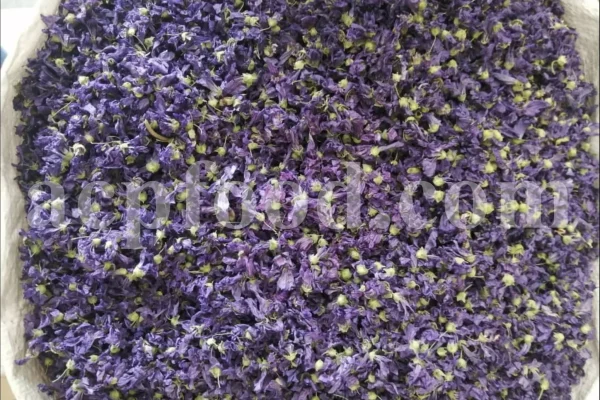
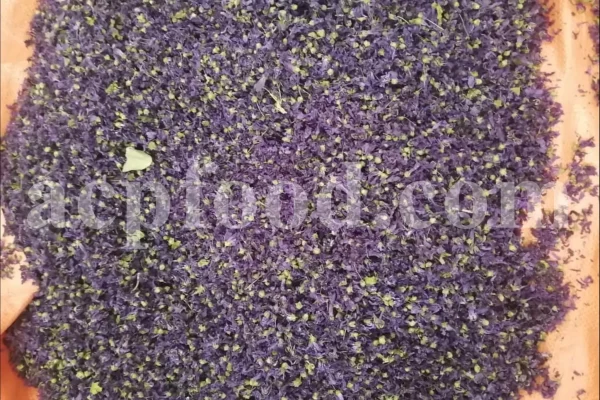

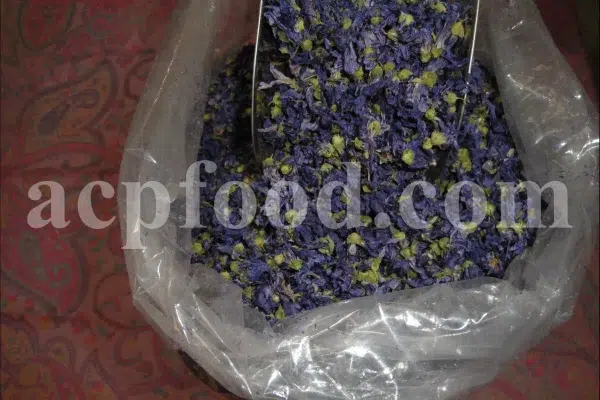
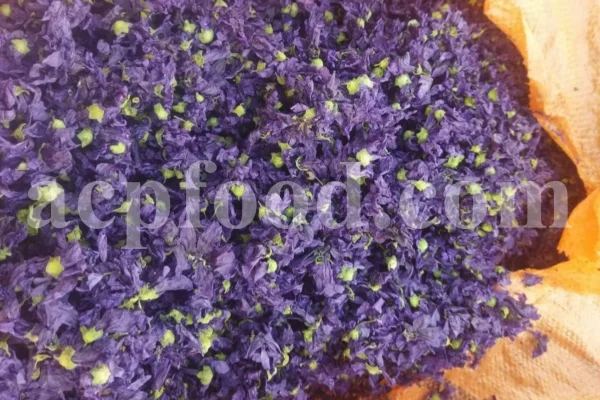
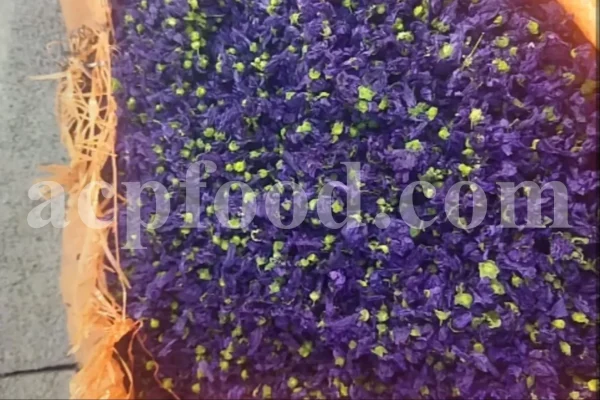
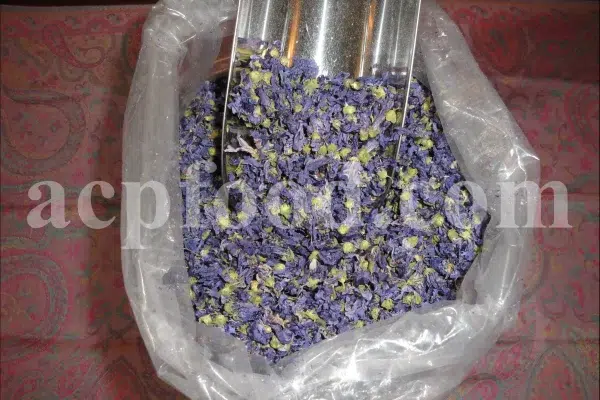
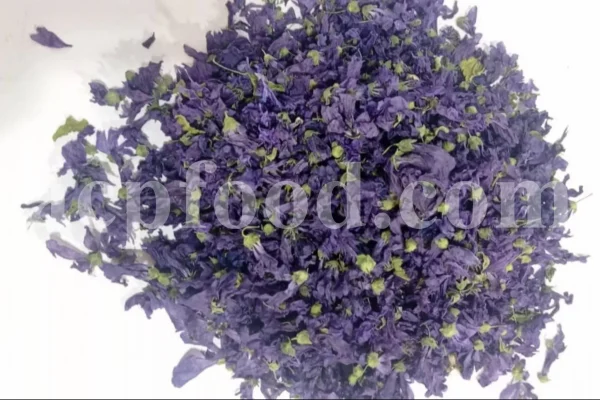
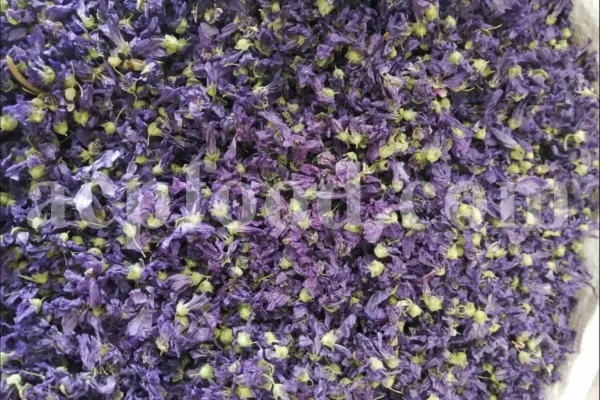
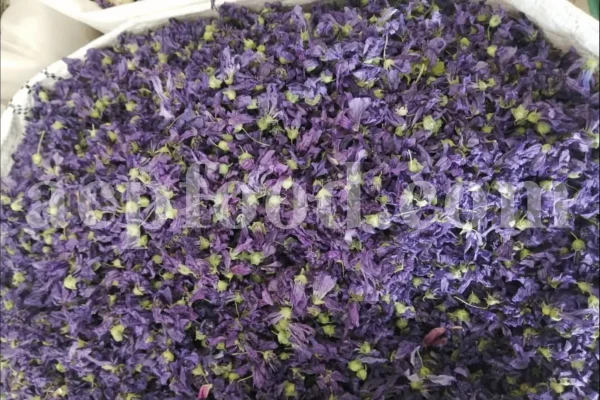
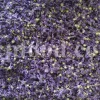
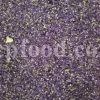
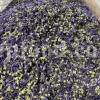
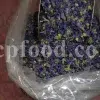
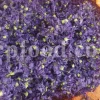
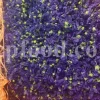
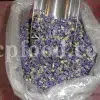
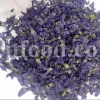
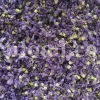
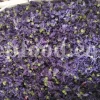
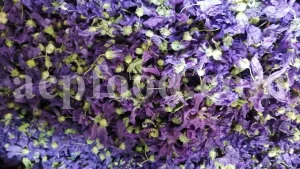
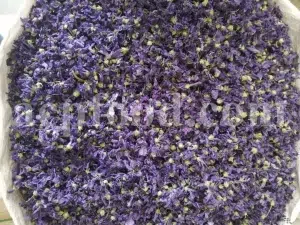
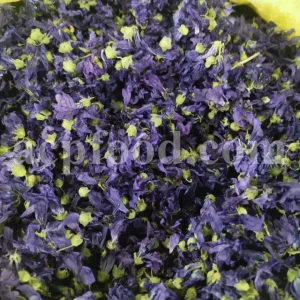
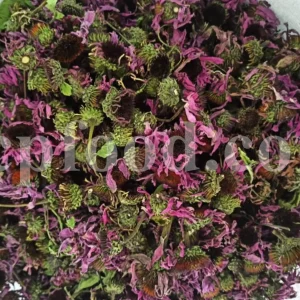
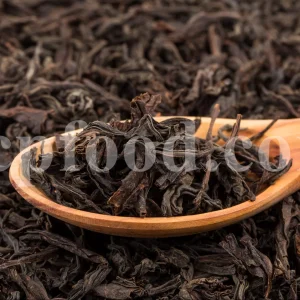
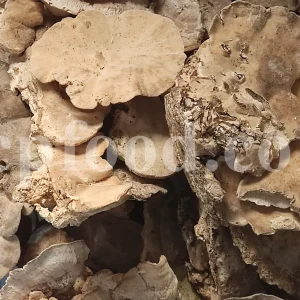
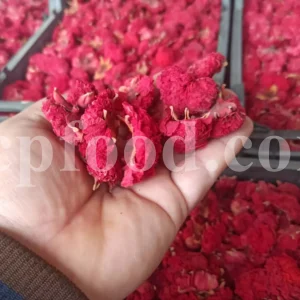
Reviews
There are no reviews yet.